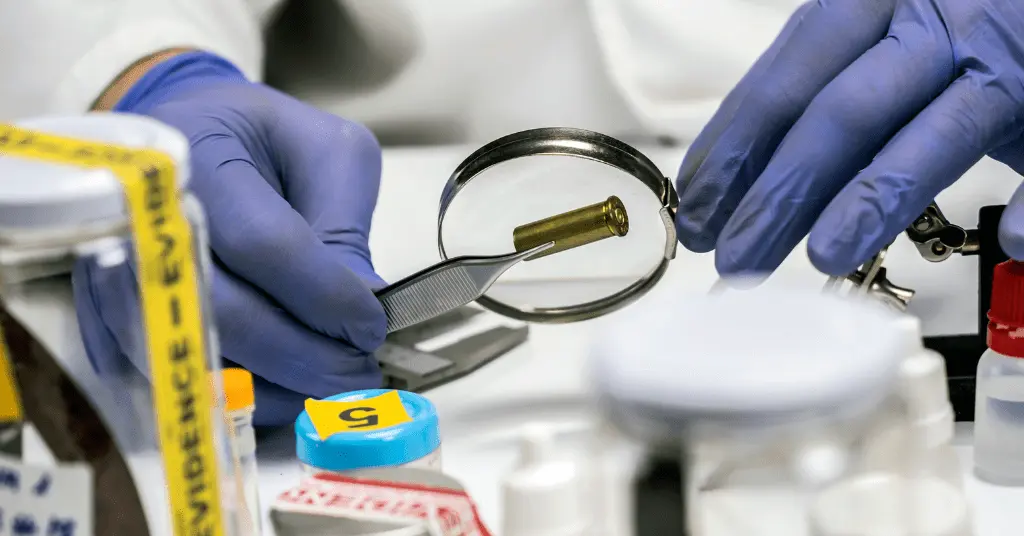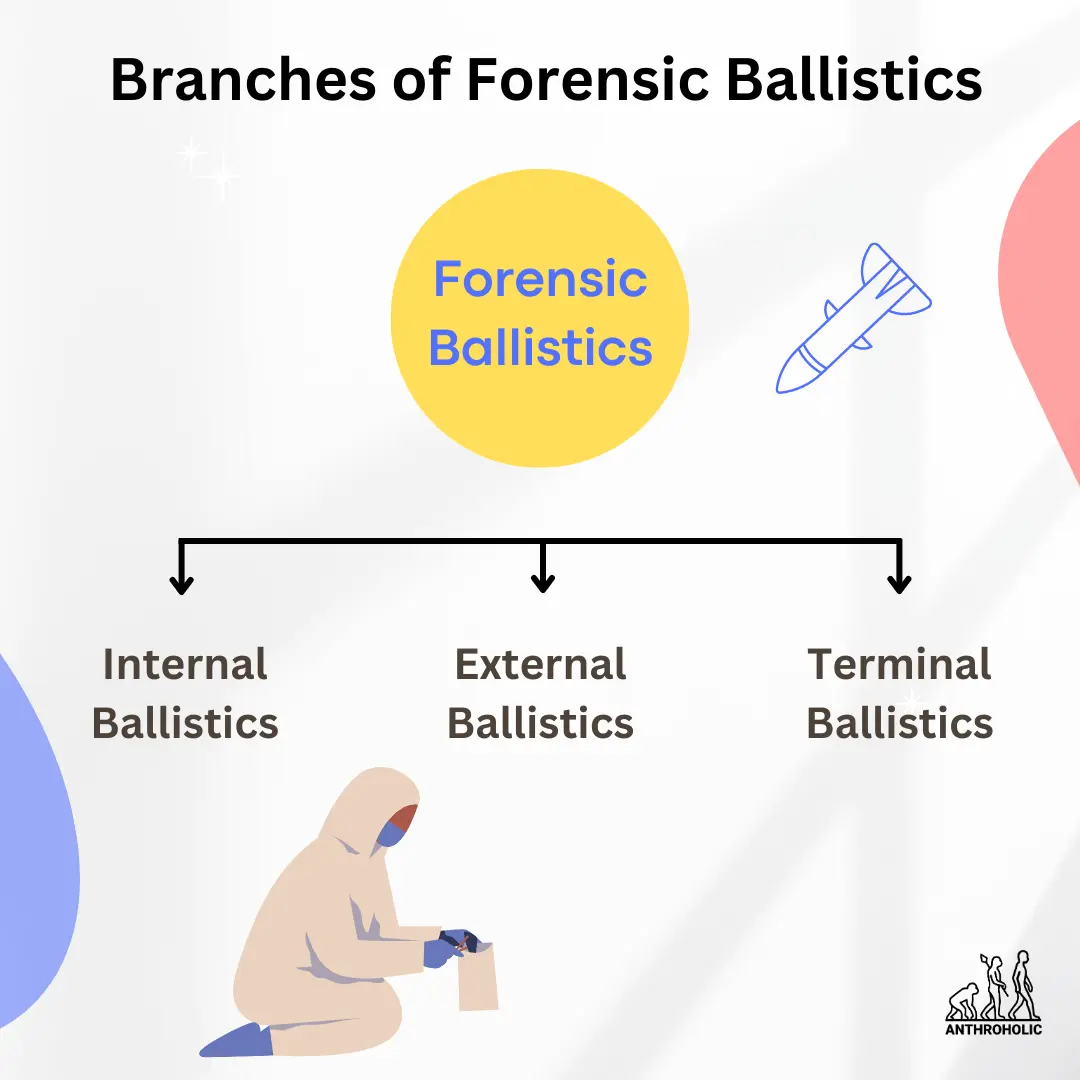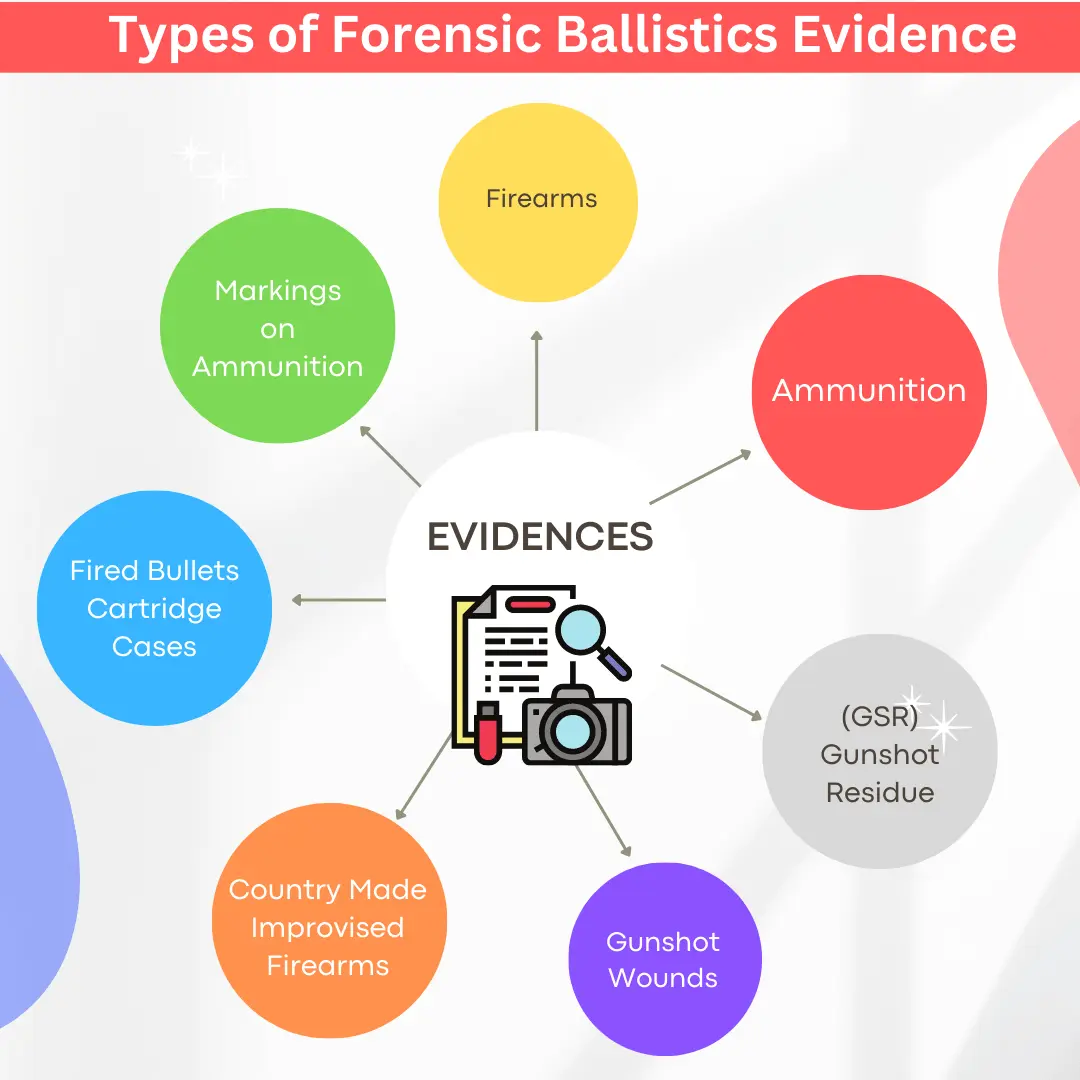AI Answer Evaluation Platform Live Now. Try Free Answer Evaluation Now
Forensic Ballistics
Firearms have always been a field of interest for many of us whether we are a part of the army, police, forensic or not. The fascination related to firearms has increased amongst the younger generation due to the rise in online games such as Pub G, Free fire etc. But have you ever wondered which field deals with firearms related cases?

Forensic Ballistics is the branch of forensic science that deals with the study of projectiles in motion and its application in the field of forensics for administration of justice in the court of law. Forensic Ballistics employs research related to the trajectory of projectiles along with the path of the bullet away from the firearm to hit the target which is connected with forensic medicine.
“Calvin Hooker Goddard” who was an army officer and a forensic scientist is known as the father of forensic Ballistics. He brought the concept of comparison microscope and described its use for the very first time in the field of forensic ballistics.In 1925 he established the Bureau of Forensic Ballistics in New York City and also headed its criminalistics laboratory. He was also an advisor to the FBI.
Branches of Forensic Ballistics

- Internal Ballistics – Internal Ballistics deals with everything that is present inside a firearm and every process that takes place while firing and till the projectile leaves the firearm. It studies the shape and size of propellant, the ignition process of the propellant, the primer, factors affecting the internal burning, lock time, ignition time, barrel time, erosion, corrosion etc.
- External Ballistics – External Ballistics deals with every process and factors that come into play while the projectile leaves the firearm and till it hits the target. The phenomena such as vacuum trajectory, base drag, air resistance,drift, yaw, trajectory computation, limiting velocity etc are studied under external ballistics.
- Terminal Ballistics – This branch of forensic ballistics deals with the effect of projectiles on hitting the target. It studies phenomena like the function of bullet shape, striking velocity, striking angle, tumbling of bullets, ricochet and its effects, stopping power etc. In addition it studies firearm wounds and its nature.
Types of Forensic Ballistics Evidence

Forensic Ballistics deals with the evidence that are related to firearms and the loss caused by it. It includes the following evidences :
- Firearms – Firearm is any form of portable projectile weapon, in simpler terms it is any type of gun. A revolver, pistol, shotgun, airgun or rifle (automatic, semi automatic), all come under firearms. The basic feature of a firearm is that it exploits gunpowder for combustion and a projectile is propelled by the expansive force of gases. So any firearm either found at the scene of crime, is recovered from the accused or is involved in the crime in any way is considered as the most important evidence for the forensic ballistics branch.
- Country made or improvised firearms – Improvised or country made firearms are the firearms manufactured other than the firearm manufacturer or a gunsmith. It uses the already existing materials such as iron pipes to construct a firearm. They are illegal in nature and are commonly known as zip guns or pipe guns. These are also an important source of evidence material, but since they are not registered; it is difficult to find the owner of the firearm.
- Ammunition – Ammunition is any unfired, live or complete cartridge and its components, bullets or projectiles, cartridge cases, primers, caps, propellants, wads, pellets etc that are used in any type of firearms.Ergo any such cartridge, bullet or its components are found at the crime scene is considered an an evidence material in forensic ballistics.
- Fired Bullets and Cartridge cases – Any bullets or cartridge cases recovered from the scene of crime or from the victim’s body is a major source of evidence in forensic ballistics. These are fired or used ammunition and not live ammunition.
- Markings on Ammunition – These are the most reliable form of evidence in forensic ballistics. Markings on the ammunition includes the different types of marks produced on the ammunition during firing such as the pin fire marks, breech face marks, chamber marks, extractor and ejector marks. These marks are highly individualistic in nature vis a vis the firearm used for firing. Thus, connecting the fired or live ammunition with the firearms.
- Gunshot Residue – Gunshot Residue or GSR, also known as the gunfire residue is the residues of the burnt and unburnt particles of the explosive primer,propellant, vapourised lead and metals that are expelled from the muzzle of a gun. These are very small particles and do not travel far. They are found on the hands of the person who fired the gun and around him, on his clothes, on the crime scene etc. It is the most important evidence material to connect the firearm and the person who fired it.
- Gunshot Wounds – Gunshot wounds or firearm injuries are also an important form of forensic ballistic evidence. There are two types of gunshot wounds depending on the type of weapon used i.e Shotgun Wounds and Wounds from revolver or automatic pistols. Depending on the range of the firearm the types of wounds are contact shot, close range , shot range, close shot, near shot, Intermediate range and Distance shot. The type of firearm wounds helps us to identify the firearm used, the range of fire, the numbers of firearms involved, exit and entry wounds etc hence, making the firearm injuries a significant forensic ballistics and forensic medicine evidence.
Application and Analysis
Forensic Ballistics mostly deals with criminal cases that involves homicide or murder, suicide, culpable homicide, war between criminal gangs, seizure of firearms, firearm trafficking or black marketting, illegal country made firearms supply, and any case where firearm injury has been caused etc.
Forensic Ballistic evidence is very fragile and it is made sure that no tampering is done while collection, packaging and transportation of the evidence. The firearm is collected using gloves so that no fingerprints are added while the bullets are collected with tweezers that have rubber ends and is transported in a cardboard box cushioned with cotton so that no extra marks are added on the bullets apart from what it already possesses. Gunshot residue is also collected using filter paper moistened with 0.1 N Hydrochloric acid. All these precautionary measures are very crucial to be followed at every step to keep the reliability of the evidence high.
The Analysis of forensic ballistic evidence is done at very minute levels to make sure that the class characteristics and individual characteristic of the evidence is ascertained, so that it can act as a reliable scientific evidence or even as collaborative evidence in the court of law. The common tools and techniques that are utilised to analyse forensic ballistic evidence are:
Comparison Microscope is the most important part of a forensic ballistic examination of bullets and cartridge cases is the analysis and comparison of evidence material recovered with the reference material i.e bullet. Micro striae are compared using a comparison microscope. Two bullets fired from the same firearm will have the exact same fire pin marks, breech face marks, chamber mark or ejector and extractor marks.Stereo microscopy is very useful in the forensic ballistic field as is let us examine the details of an evidence very minutely and thus helps in comparison. Scanning electron microscope is also readily used in the detailed examination of forensic ballistic evidence. Rifling metre helps in counting the lands and grooves of a rifled firearm. Peripheral cameras and comparison cameras are also widely used.
Apart from these tools various tests are done for the examination of Gunshot Residue such as Walker Test and Griess Test for the presence of nitrites that is a component of propellant, Sodium rhodizonate test for the presence of Lead and Barium etc. Other high end techniques that are helpful in examination of metals and nonmetals in gunshot residue are Neutron activation analysis, Atomic absorption spectrometry and Soft x- ray radiography.
Softwares like Tally surf and Tally ron are also employed in the examination of forensic ballistic evidence. NIBIN or National Integrated Ballistic Information Network is a specialised computer network in the United States that automates ballistic evaluation. It contains digital pictures and data related to already fired and recovered ammunition and firearms.
After the analysis is done a report is made mentioning the results of each test and examination without any conclusion and personal opinion. The report is then submitted to the Investigative officer along with the firearm examined in a sealed bag. Forensic Ballistics has been a very vital branch of the forensic sciences since its inception and is also developing day by day in its tools and techniques.




